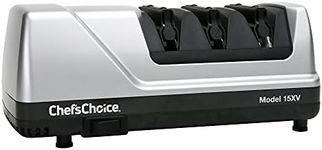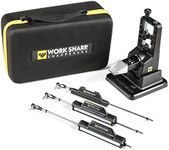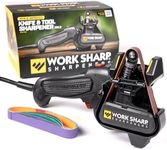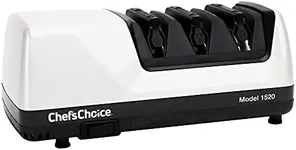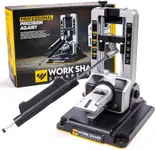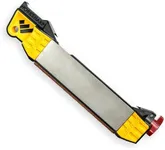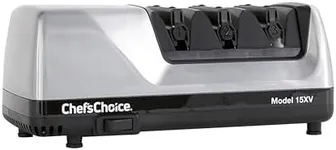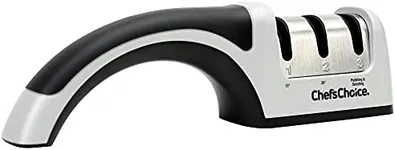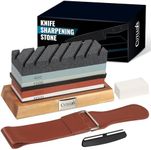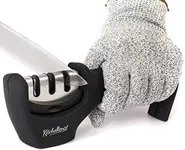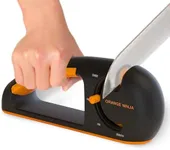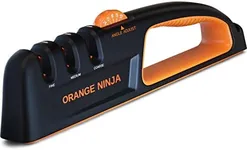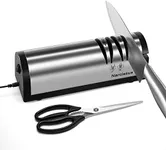Buying Guide for the Best Sharpener Knives
Choosing the right knife sharpener is essential for maintaining the longevity and performance of your knives. A good sharpener will keep your blades in top condition, making your cutting tasks easier and safer. When selecting a knife sharpener, consider the type of knives you have, how often you use them, and your comfort level with sharpening tools. Here are some key specifications to help you make an informed decision.Type of SharpenerKnife sharpeners come in various types, including manual, electric, and sharpening stones. Manual sharpeners are easy to use and portable, making them ideal for occasional use. Electric sharpeners are more convenient and faster, suitable for frequent use and those who prefer a hands-off approach. Sharpening stones offer the most control and precision, perfect for those who are experienced or want to learn the traditional method. Choose the type that matches your usage frequency and comfort level.
Sharpening StagesSome sharpeners offer multiple stages, typically including coarse, medium, and fine sharpening. Coarse stages are for repairing and reshaping dull or damaged blades, medium stages refine the edge, and fine stages polish and hone the blade for a razor-sharp finish. If you have a variety of knives or frequently need to restore very dull blades, a multi-stage sharpener can be beneficial. For regular maintenance, a single-stage sharpener may suffice.
Abrasive MaterialThe material used in the sharpener's abrasive surface affects its performance and suitability for different types of knives. Common materials include diamond, ceramic, and tungsten carbide. Diamond abrasives are very hard and effective for sharpening all types of steel, including high-carbon and stainless steel. Ceramic abrasives are gentler and ideal for honing and maintaining an already sharp edge. Tungsten carbide is very aggressive and best for quickly restoring very dull blades. Consider the types of knives you have and choose an abrasive material that matches their needs.
Angle GuidesAngle guides help you maintain a consistent sharpening angle, which is crucial for achieving a sharp and durable edge. Some sharpeners come with fixed angle guides, while others offer adjustable guides to accommodate different blade angles. Fixed guides are simpler to use and ensure uniform results, making them great for beginners. Adjustable guides provide more flexibility and are useful if you have knives with varying edge angles. Think about your knife collection and your ability to maintain a consistent angle when choosing a sharpener with or without angle guides.
Ease of UseThe ease of use of a knife sharpener can greatly influence your sharpening experience. Consider features like ergonomic handles, non-slip bases, and clear instructions. Manual sharpeners should be comfortable to hold and stable during use. Electric sharpeners should have intuitive controls and safety features. Sharpening stones should come with a sturdy base or holder. If you are new to sharpening, look for a sharpener with user-friendly features to make the process easier and more enjoyable.
Compatibility with Knife TypesNot all sharpeners are suitable for every type of knife. Some are designed specifically for straight-edged knives, while others can handle serrated blades, scissors, or even ceramic knives. Check the sharpener's compatibility with your knife collection to ensure it meets your needs. If you have a diverse set of knives, look for a versatile sharpener that can accommodate different blade types. This will save you from needing multiple sharpening tools.
